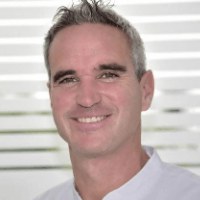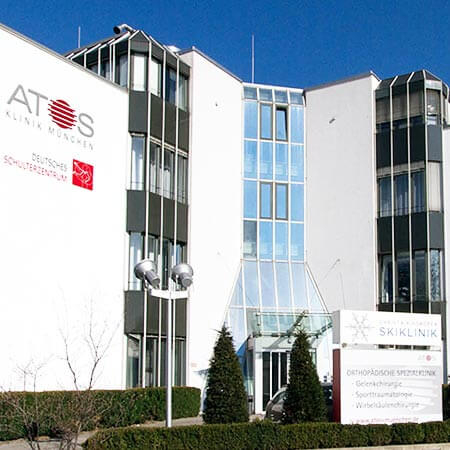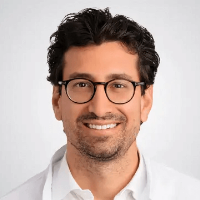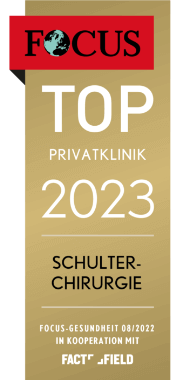Osteochondrosis — Treatment With Stem Cell in the Best Hospitals of Germany
Treatment prices are regulated by national law of the corresponding countries, but can also include additional hospital coefficients. In order to receive the individual cost calculation, please send us the request and medical records.

Department of Alternative Medicine
The Department of Alternative Medicine specializes in the treatment of various types of cancer and chronic diseases using the methods of integrative medicine. The department belongs to few medical facilities in Germany, which offer individual treatment regimens using biological and integrative techniques. The department has state-of-the-art medical technologies, as well as a multidisciplinary team of competent specialists in various medical fields, including therapists, oncologists, gynecologists, urologists, orthopedists, nephrologists, surgeons, cardiologists and others. In addition, the department has a pleasant and friendly atmosphere.


Department of Orthopedics
The Department of Orthopedics offers the comprehensive diagnostics using high-precision imaging equipment, as well as conservative and surgical treatments for all diseases, injuries and functional limitations of the musculoskeletal system. The department uses the very latest treatment methods, such as acupuncture, autohemotherapy, PRP therapy, shockwave therapy, K-Taping therapy, etc. In the field of surgical treatment, the preference is always given to minimally invasive, endoscopic and arthroscopic operations.




Department of Orthopedics, Foot Surgery, Hand Surgery and Spinal Surgery
According to the prestigious medical magazine Focus, the Department of Orthopedics, Foot Surgery, Hand Surgery and Spinal Surgery is one of the best medical facilities in Germany, specializing in shoulder and knee surgery, foot surgery, and hand surgery! The department offers a full range of medical services for diseases of the musculoskeletal system. The key focus of the department's doctors is the treatment of diseases of the large joints: knee, hip, shoulder, elbow, ankle, and wrist. Foot surgery specialists are responsible for the correction of hallux valgus, hallux rigidus, clubfoot, flatfoot, and claw toes, as well as the treatment of ankle arthrosis, heel spurs, and Achilles tendon ruptures. The department regularly admits patients with hand diseases, with particular interest in the treatment of wrist arthrosis, rhizarthrosis, carpal tunnel syndrome, and Dupuytren's contracture. The therapeutic offer is complemented by conservative and surgical treatment of spinal diseases such as herniated discs, spinal canal stenosis, vertebral fractures, and others. The department's medical team offers patients effective conservative treatment methods. However, when surgery is required, arthroscopic and minimally invasive techniques are preferred to ensure the fastest possible postoperative recovery and a high level of safety.


Back pain is often caused by degenerative changes in the intervertebral joints. They begin in the third decade of life, and the age group 45-64 years has the highest prevalence of osteochondrosis. Most patients do not want to undergo surgical treatment, preferring conservative therapy. If standard methods no longer help control back pain, you can have stem cell therapy. This innovative technique allows patients to get good long-term results. And what is more, it is effective even for severe osteochondrosis. On the Booking Health website, you can find out prices, choose a hospital, and make your treatment appointment for your preferred dates.
Content
- Principles of the treatment method for spinal osteochondrosis
- When can stem cells be used for spinal osteochondrosis?
- Has the effectiveness of stem cell treatment for spinal osteochondrosis been proven?
- Where to undergo your stem cell treatment for spinal osteochondrosis?
Principles of the treatment method for spinal osteochondrosis
The principle of biological treatment or prevention of spinal disc degeneration is the restoration of its hydration and cushioning properties.
Stem cells (SCs) are non-specialized cells characterized by a high rate of growth and reproduction. They are of different types. Doctors successfully use mesenchymal bone marrow stem cells, adipose tissue stem cells, muscle stem cells, hematopoietic stem cells, olfactory membrane stem cells, and synovial stem cells to treat osteochondrosis. Types of adult stem cells can differentiate along the line of mesenchymal tissues, namely into bones, cartilage, adipose tissue, and muscles.
There are several therapeutic strategies for intervertebral disc repair using stem cells. These include the following:
- direct injection of undifferentiated or pre-differentiated cells into the disc (cell therapy);
- intravenous administration of stem cells;
- injection into the intervertebral disc (IVD) of structures obtained by combining stem cells with a viscoelastic hydrogel (tissue engineering);
- genetic modification, that is, a change in target genes followed by the injection of genetically modified stem cells into the intervertebral disc.
Recently, scientists have discovered a new type of stem cell by isolating them from an intervertebral disc with degenerative changes. They are similar to mesenchymal stem cells originating from the bone marrow. Today, they are used only as part of clinical trials.
When can stem cells be used for spinal osteochondrosis?
Osteochondrosis with mild or moderate degenerative changes in the intervertebral discs is an indication for conservative therapy. Patients receive painkillers, massage, physiotherapy, and therapeutic exercises. All these measures help to control the disease, but it still does not regress, and moreover, it often progresses as the intervertebral discs continue to degrade.
Stem cells are used when other conservative measures to relieve pain are ineffective. They provide the following results:
- stimulate the regeneration of intervertebral disc tissues;
- reduce pain for a long time;
- eliminate inflammation;
- improve the effectiveness of other conservative treatment methods.
Stem cells can be used both as monotherapy and as an addition to other therapeutic procedures and drugs. Specialists resort to this treatment option when other methods do not work and a person refuses surgery. Although long-term pain relief can also be achieved with surgery, an operation is associated with the risk of complications, discomfort, and a long recovery, while stem cell treatment takes a minimum of time, helps to get a good long-term result, and avoids surgery. Moreover, the procedure is completely safe. If the effect weakens over time, stem cell injections can be repeated.
In medicine, different types of stem cells are used, but those from blood, adipose tissue, and bone marrow are the most common ones for the treatment of osteochondrosis. They are usually injected into tissue in the area of the spine that is the source of pain. These can be intervertebral discs, facet joints, or sacroiliac joints.
Treatment is not standardized and can consist of a single injection of stem cells or several injections at intervals of 4-8 weeks. Stem cells are harvested from different patients' tissues. They can be cultivated or frozen, but, more often than not, they are used fresh, and the injection is carried out within a short time after stem cell harvesting.
Has the effectiveness of stem cell treatment for spinal osteochondrosis been proven?
The effectiveness of stem cells for osteochondrosis is not conclusively proven, so the therapy is not considered standard. However, more and more trials are being carried out around the world on the treatment of the spine with the help of stem cells, and there is more and more evidence of the effectiveness of cell therapy.
A review of 21 trials was published in 2018. In 12 cases, stem cells were injected into the lumbar intervertebral discs, in 5 cases, they were injected into the epidural space, and in 3 trials, injections were made into the facet joints of the lumbar spine. Stem cells were injected into the sacroiliac joints in the other three trials. Summarizing the results obtained, the authors of the review concluded that stem cells are effective in the treatment of lower back pain of discogenic origin, radicular pain, facet joint pain, and sacroiliac joint pain.
Some medical organizations already recommend the use of stem cells for osteochondrosis as the main or additional method. For example, in 2019, the American Society of Interventional Pain Physicians (ASIPP) published guidelines for the responsible, safe, and effective use of biologics for the treatment of lower back pain. After reviewing the available evidence for effectiveness, the ASIPP concluded that regenerative therapies (including stem cells and platelet-rich plasma) can be used as a stand-alone treatment method or in combination with other therapies, including a structured program with exercises, physiotherapy, behavioral therapy, and drug therapy.
In 2022, the results of a placebo-controlled trial were published, in which patients received injections of bone marrow mesenchymal stem cells. The monitoring period was 12 months. After the injection, patients received a long-term result: pain relief of 2 points or more persisted for 3 months in 74% of patients, for 6 months in 66% of patients, and in 56% of patients after 12 months. In the control group, pain relief after the injection of placebo instead of stem cells was achieved in only 8% of cases. What is most remarkable is that this trial included only patients with severe pain and severe degenerative changes in the spine that affected the intervertebral discs, facet joints, nerve roots, and sacroiliac joint. This suggests that stem cells work even in severe cases when surgery is an alternative to their use.
Where to undergo your stem cell treatment for spinal osteochondrosis?
Since stem cell therapy has not yet become widespread in the world, the method is not used in all countries. It is, however, already being used in developed countries, including Germany. You are welcome to use the Booking Health service if you want to undergo your stem cell treatment for osteochondrosis. On our website, you can find out the cost of treatment and compare prices at different German clinics to choose a medical care program at the best price.
Treatment in Germany has the following benefits:
- accurate diagnostics help determine the sources of pain in the case of osteochondrosis;
- vast experience in the use of stem cells for the treatment of osteochondrosis;
- safe cell therapy;
- adequate anesthesia for all procedures, including injections into the intervertebral discs or facet joints, and harvesting stem cells from the bone marrow;
- combination of cell therapy with other modern conservative methods for osteochondrosis treatment;
- good long-term results.
On the Booking Health website, you can select a hospital for treating your osteochondrosis with cell therapy. Here you can also check the average cost of treatment. When you make your appointment through the Booking Health service, prices for treatment will be lower than when you contact the hospital directly, due to the absence of taxes for foreign patients. Our specialists will take care of organizing your trip. They will book hotel and airline tickets, help you prepare the documents, and provide interpreting services. They will also meet you at the German airport and take you to the hospital by car.
Authors:
The article was edited by medical experts, board-certified doctors Dr. Nadezhda Ivanisova and Dr. Vadim Zhiliuk. For the treatment of the conditions referred to in the article, you must consult a doctor; the information in the article is not intended for self-medication!
Sources:

